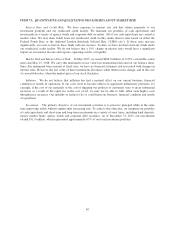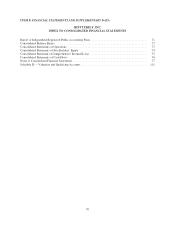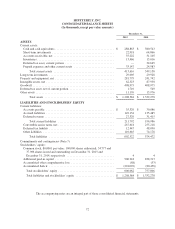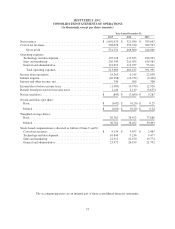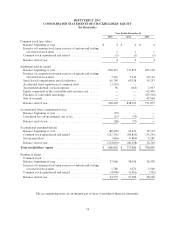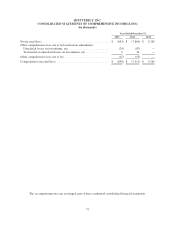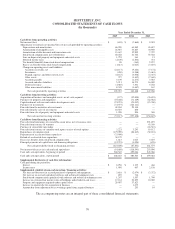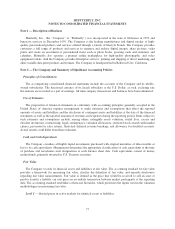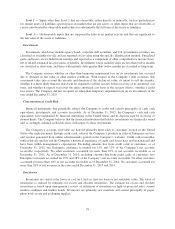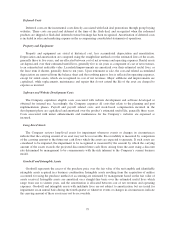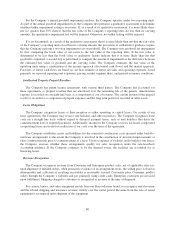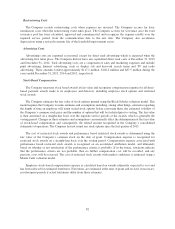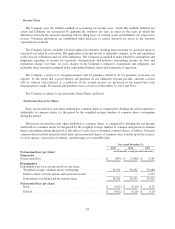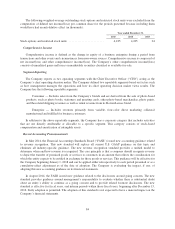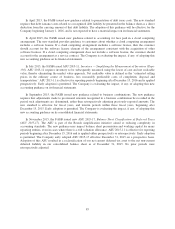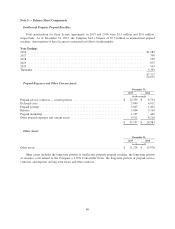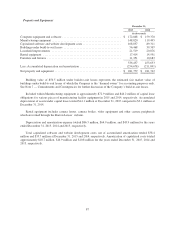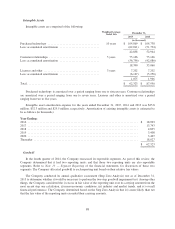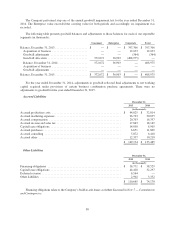Shutterfly 2015 Annual Report Download - page 81
Download and view the complete annual report
Please find page 81 of the 2015 Shutterfly annual report below. You can navigate through the pages in the report by either clicking on the pages listed below, or by using the keyword search tool below to find specific information within the annual report.Deferred Costs
Deferred costs are the incremental costs directly associated with flash deal promotions through group buying
websites. These costs are paid and deferred at the time of the flash deal, and recognized when the redeemed
products are shipped or flash deal deferred revenue breakage has been recognized. Amortization of deferred costs
is included in sales and marketing expense in the accompanying consolidated statements of operations.
Property and Equipment
Property and equipment are stated at historical cost, less accumulated depreciation and amortization.
Depreciation and amortization are computed using the straight-line method over the estimated lives of the assets,
generally three to five years, and are allocated between cost of net revenues and operating expenses. Rental assets
are depreciated over their estimated useful lives, generally five to six years as component of cost of net revenues,
to an estimated net realizable value. Leasehold improvements are amortized over their estimated useful lives, or
the lease term if shorter, generally three to ten years. Upon retirement or sale, the cost and related accumulated
depreciation are removed from the balance sheet and the resulting gain or loss is reflected in operating expenses,
except for rental assets, which are recognized in cost of net revenues. Major additions and improvements are
capitalized, while replacements, maintenance and repairs that do not extend the life of the asset are charged to
expense as incurred.
Software and Website Development Costs
The Company capitalizes eligible costs associated with website development and software developed or
obtained for internal use.Accordingly, the Company expenses all costs that relate to the planning and post
implementation phases. Payroll and payroll related costs and stock-based compensation incurred in the
development phase are capitalized and amortized over the product’s estimated useful life, generally three years.
Costs associated with minor enhancements and maintenance for the Company’s websites are expensed as
incurred.
Long-Lived Assets
The Company reviews long-lived assets for impairment whenever events or changes in circumstances
indicate that the carrying amount of an asset may not be recoverable. Recoverability is measured by comparison
of the carrying amount to the future net cash flows which the assets are expected to generate. If such assets are
considered to be impaired, the impairment to be recognized is measured by the amount by which the carrying
amount of the assets exceeds the projected discounted future cash flows arising from the asset using a discount
rate determined by management to be commensurate with the risk inherent to the Company’s current business
model.
Goodwill and Intangible Assets
Goodwill represents the excess of the purchase price over the fair value of the net tangible and identifiable
intangible assets acquired in a business combination. Intangible assets resulting from the acquisition of entities
accounted for using the purchase method of accounting are estimated by management based on the fair value of
assets received. Intangible assets are amortized on a straight-line basis over the estimated useful lives which
range from one to sixteen years, and the amortization is allocated between cost of net revenues and operating
expenses. Goodwill and intangible assets with indefinite lives are not subject to amortization, but are tested for
impairment on an annual basis during the fourth quarter or whenever events or changes in circumstances indicate
the carrying amount of these assets may not be recoverable.
79


